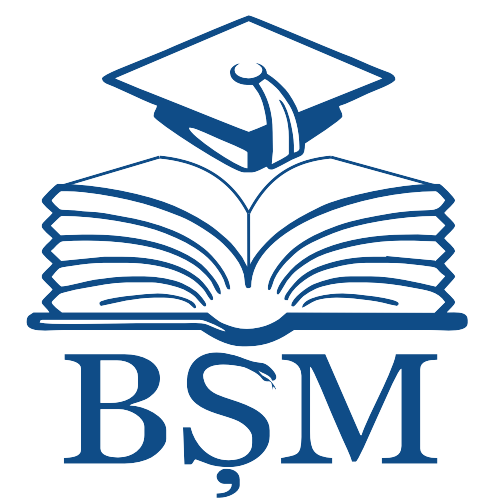|
|
- IRMS - Nicolae Testemitanu SUMPh
- 1. COLECȚIA INSTITUȚIONALĂ
- MATERIALE ALE CONFERINȚELOR ȘTIINȚIFICE
- Abordări interdisciplinare în stomatologie. Conferință națională cu participare internațională 11-12 aprilie 2025, Academia de Științe a Moldovei
- Conferința "Abordari interdisciplinare în stomatologie", Chişinău, Moldova, 11-12 aprilie 2025
Please use this identifier to cite or link to this item:
http://hdl.handle.net/20.500.12710/31010
| Title: | Evoluția morfologică a dezvoltării maxilarului la copiii cu despicături labio-maxilopalatine unilaterale și bilaterale |
| Other Titles: | Morphological evolution of development of maxillary in children with unilateral and bilateral cleft lip and palate |
| Authors: | Railean, Silvia
Poştaru, Cristina
Ursu, Dănis
Dranga, Concordia
Vasluiean, Petru |
| Keywords: | congenital malformation;cleft lip/palate;primary reconstruction of the lip;primary reconstruction of the palate;jaw;children |
| Issue Date: | 2025 |
| Publisher: | Academia de Ştiinţe a Moldovei, Universitatea de Stat de Medicină şi Farmacie „Nicolae Testemiţanu“, Asociaţia stomatologilor din Republica Moldova e |
| Citation: | RAILEAN, Silvia; Cristina POŞTARU; Dănis URSU; Concordia DRANGA și Petru VASLUIEAN. Evoluția morfologică a dezvoltării maxilarului la copiii cu despicături labio-maxilopalatine unilaterale și bilaterale = Morphological evolution of development of maxillary in children with unilateral and bilateral cleft lip and palate. In: Abordări interdisciplinare în stomatologie. Conferință națională cu participare internațională 11-12 aprilie 2025, Academia de Științe a Moldovei. Chișinău, 2025, p. 79. ISBN 978-5-857 48-140-0. |
| Abstract: | Introducere. Despicăturile labio-maxilo-palatine sunt cele mai frecvente malformații congenitale la copii. Deși, pe
parcursul anilor s-au modificat tehnicile chirurgicale, deficiențele morfo-funcționale în dezvoltarea maxilarelor la copii
rămân a fi rezolvate.
Scopul lucrării. Impactul malfomațiilor congenitale a despicăturile labiomaxilopalatine (DLMP) în dezvoltarea
sistemului dento-alveolar și dento-maxilar.
Materiale și metode. Au fost analizați 15 copii cu malformații congenitale în regiunea OMF (DLMP unilaterale și
bilaterale). Toți au beneficiat de tratament chirugical etapizat, inițiat la vârsta de 3 - 6 luni și finalizat la 32 de luni. Protocolul
operator a inclus: plastia primară a buzei superioare și palatului moale la 12 luni și plastia primară a palatului
dur la 24 luni. Post-operatoriu copiii au beneficiat de tratament logopedic și ortopedic. S-a efectuat studiul morfometric
pe modelele pacienților cu despicături totale unilaterale și bilaterale în cele 3 planuri și comparate cu modelele copiilor
sănătoși. S-au analizat diferențele de creștere a maxilarelor prin studierea contactelor ocluzale, distanțele la nivelul caninilor,
la nivelul molarilor, și transversal de la canin la suprafața proximală a dinților molari.
Rezultate. La copii cu despicături unilaterale, contactele ocluzale au avut o eficiență de 75% față de 95% la copiii
sănătoși. Diferența de creștere a maxilarului superior a fost mai mică cu 1–2 cm în comparație cu cei sănătoși. În despicăturile
bilaterale, contactele ocluzale au fost de 65%, vizavi de 95%, iar restricțiile de creștere cu 2–3 cm mai mic.
Concluzie. În concluzie, dezvoltarea maxilarelor este diminuată la copiii cu despicături unilaterale, comparativ
cu cei sănătoși, în timp ce la copiii cu despicături bilaterale se observă o reducere severă a creșterii atât față de copiii
sănătoși, cât și în raport cu cei cu despicături unilaterale, evidențiind necesitatea unui management interdisciplinar.
Background. Cleft lip and palate are the most common congenital malformations in children. Although surgical
methodologies have evolved over the years, morphofunctional deficiencies in child development remain to be adressed.
Objective of the study. The impact of Congenital Cleft and Palate (CL/P) malformations on the development of the
dentoalveolar and dentomaxillary system.
Material and Methods. A total of 15 children with congenital malformations in the oro-maxillo-facial region including
unilateral and bilateral cleft lip and palate, were analyzed. All patients underwent staged surgical treatment,
initiated at the ages of 3, 5 and 6 months and completed by 32 months. The surgical protocol included primary repair of
the upper lip and soft palate at 12 months, followed by primary repair of the hard palate at 24 months. Additionally, all
children received speech therapy and orthopedic treatment. A morphometric study was conducted on models of patients
with complete unilateral and bilateral clefts in three planes and compared to models of healthy children. Differences in
maxillary growth were analyzed by examining occlusal contacts, canine-level distances, molar level distances, and transverse
measurements from the canine to the proximal surface on the molar teeth.
Results. In children with unilateral clefts, occlusal contacts were 75% efficient compared to 95% in healthy children.
The maxillary growth difference was reduced by 1-2cm compared to healthy individuals. In cases of bilateral clefts,
occlusal contact efficiency was 65% versus 95% children in healthy children, while growth restrictions resulted in a
maxillary reduction of 2-3cm.
Conclusion. In conclusion, maxillary development is reduced in children with unilateral clefts compared to healthy
individuals, while those with bilateral clefts, exhibit a severe growth restriction, both in comparison to healthy children
and those with unilateral clefts. These findings highlight the necessity of an interdisciplinary management approach. |
| metadata.dc.relation.ispartof: | Conferința Științifică Națională “Microbiologia modernă – provocări și perspective”, 6-7 iunie 2025, Chișinău, Republica Moldova |
| URI: | https://ibn.idsi.md/vizualizare_articol/229746
https://repository.usmf.md/handle/20.500.12710/31010 |
| ISBN: | 978-5-857 48-140-0 |
| Appears in Collections: | Conferința "Abordari interdisciplinare în stomatologie", Chişinău, Moldova, 11-12 aprilie 2025
|
Files in This Item:
There are no files associated with this item.
Items in DSpace are protected by copyright, with all rights reserved, unless otherwise indicated.
|


